[Advertisement]
[Advertisement]

TICKET / INFO
- StudentRush
- New York Show Tickets
- Givenik.com
- Telecharge.com
- Ticketmaster.com
- Group Sales Box Office
- Frugal TheaterGoer
- Broadway for Broke People
- Playbill's Rush/Lottery/SR
- Seating Charts
COMMUNITY
NEWS
- Back Stage
- Bloomberg
- Broadway.com
- BroadwayWorld
- Entertainment Weekly
- NYTheatre.com
- New York Magazine
- The New York Daily News
- The New York Post
- The New York Times
- The New Yorker
- Newsday
- NiteLife Exchange
- Playbill
- Show Business Weekly
- The Star-Ledger
- Talkin'Broadway
- TheaterMania.com
- Time Out New York
- American Theatre Magazine
- Theatre Development Fund (TDF)
- Best of Off-Broadway
- The Village Voice
- Variety
- The Wall Street Journal
- Journal News
REVIEWS
- The New York Times
- Variety
- New York Post
- NY1
- Aisle Say
- CurtainUp
- DC Theatre Scene
- Show Showdown
- Stage and Cinema
- StageGrade
- Talk Entertainment
- TotalTheater.com
- Off-Off Broadway Review
- TheaterOnline.com
- TheaterScene.net
- TheaterNewsOnline.com
WEST END
- The Stage
- 1st 4 London Theatre Tickets
- Book Your Theatre Tickets
- Compare Theatre Tickets.co.uk
- Theatre.com
- Whatsonstage.com [UK]
- ATW - London
- Musical Stages [UK]
- Albemarle of London
- Londontheatre.co.uk
- Google News
- Show Pairs
- ILoveTheatre.com
- The Official London Theatre Guide
- UK Tickets
BOSTON
CHICAGO
LA/SF
COLUMNS
- Peter Bart
- Andrew Cohen
- Ken Davenport
- Tim Dunleavy
- Peter Filichia
- Andrew Gans
- Ernio Hernandez
- Harry Haun
- Chad Jones
- Chris Jones
- James Marino
- Joel Markowitz
- Matthew Murray
- Michael Musto
- Ellis Nassour
- Tom Nondorf
- Richard Ouzounian
- Michael Portantiere
- Rex Reed
- Michael Riedel
- Frank Rizzo
- Richard Seff
- Frank Scheck
- Mark Shenton
- John Simon
- Robert Simonson
- Steve on Broadway (SOB)
- Steven Suskin
- Terry Teachout
- Theater Corps
- Elisabeth Vincentelli
- Hedy Weiss
- Matt Windman
- Linda Winer
- Matt Wolf
PODCAST
RADIO
TV
- Theater Talk
- BlueGobo.com
- Classic Arts Showcase
- American Theatre Wing Seminars
- Women in Theatre
- NY1
- WCBS [2]
- WNBC [4]
- FOX [5]
- WABC [7]
- WWOR [9]
- WPIX [11]
- Channel 13
- Hulu
- YouTube
AWARDS
- Tony Central
- Oscar Central
- Tony Awards
- Drama Desk Awards
- The Drama League Awards
- Lortel Awards
- Academy Awards
- Emmy Awards
- Grammy Awards
- GoldDerby
DATABASE
- Internet Broadway Database
- Internet Off-Broadway Database
- Internet Movie Database
- Internet Theatre Database
- Musical Cast Album Database
- [CastAlbums.org]
- Show Music on Record Database (LOC)
- CurtainUp Master Index of Reviews
- Musical Heaven
- StageSpecs.org
ROAD HOUSES
- Gammage [AZ]
- Golden Gate [CA]
- Curran [CA]
- Orpheum [CA]
- Community Center [CA]
- Civic [CA]
- Ahmanson [CA]
- Pantages [CA]
- Temple Hoyne Buell [CO]
- Palace [CT]
- Rich Forum [CT]
- Shubert [CT]
- Bushnell [CT]
- Chevrolet [CT]
- Broward Center [FL]
- Jackie Gleason [FL]
- Fox [GA]
- Civic Center [IA]
- Cadillac Palace [IL]
- Ford Center/Oriental [IL]
- The Bank of America Theatre [IL]
- Auditorium Theatre of Roosevelt University [IL]
- Kentucky Center [KY]
- France-Merrick [MD]
- Colonial [MA]
- Wilbur [MA]
- Charles [MA]
- Wang [MA]
- Wharton Center [MI]
- Whiting [MI]
- Fisher [MI]
- Masonic Temple [MI]
- Orpheum, State, and Pantages [MN]
- Fabulous Fox [MO]
- New Jersey PAC [NJ]
- Auditorium Center [NY]
- Proctors [NY]
- Shea's PAC [NY]
- BTI Center [NC]
- Blumenthal PAC [NC]
- Schuster PAC [OH]
- Playhouse Square [OH]
- Aronoff Center [OH]
- Ohio [OH]
- Victoria Theatre [OH]
- Birmingham Jefferson [OH]
- Merriam Theater [PA]
- Academy of Music [PA]
- Benedum Center [PA]
- Providence PAC [RI]
- Orpheum [TN]
- Hobby Center [TX]
- Music Hall [TX]
- Bass Hall [TX]
- Paramount [WA]
- Fox Cities PAC [WI]
- Marcus Center [WI]
- Weidner Center [WI]
FESTIVALS
- The New York International Fringe Festival
- The American Living Room Festival
- Summer Play Festival
- The New York Musical Theatre Festival
- Adirondack Theatre Festival
- NAMT: Festival of New Musicals
SPECIAL
- BC/EFA: Broadway Cares / Equity Fights AIDS
- The Actors' Fund
- Stage Directors and Choreographers Foundation
EDUCATION
- Google Shakespeare
- Actor Tips
- AACT
- ArtSearch
- Broadway Classroom
- Broadway Educational Alliance
- Camp Broadway
- Great Groups - New York Actors
- Theatre Communications Group (TCG)
- Theatre Development Fund (TDF)
- Off-Broadway Theater Information Center
UNIONS/TRADE
- AEA
- SAG
- AFTRA
- AGMA
- The League
- APAP
- Local 1
- ATPAM
- IATSE
- AFM
- AFM - Local 802
- Treasurers & Ticket Sellers Union
- DGA
- Dramatists Guild
- USA 829
- WGA, East
- WGA, West
- SSD&C
- AFL-CIO
- League of Professional Theatre Women
NYC NON-PROFITS
- Cherry Lane Theatre
- City Center
- Drama Dept.
- Ensemble Studio Theater
- Jean Cocteau Rep.
- Lark
- Lincoln Center Theater
- Lincoln Center for the Performing Arts
- Lucille Lortel Foundation
- Manhattan Theatre Club
- MCC
- Mint
- Pearl Theatre Company
- Public Theater
- Roundabout
- Second Stage
- Signature
- The Vineyard Theatre
- The York Theatre Company
REGIONAL
- Actors Theatre
- Alabama Shakespeare Festival
- Alley Theatre
- ACT
- American Musical Theatre in San Jose
- American Repertory
- Arena Stage
- Barrington Stage Company
- Bay Street Theatre
- Berkeley Rep
- Casa Manana
- Chicago Shakespeare Theater
- Cincinnati Playhouse
- CTC
- Dallas Summer Musicals
- Dallas Theater Center
- Denver Center
- George Street
- Goodman
- Guthrie
- Goodspeed
- Hartford Stage
- Hudson Stage Company
- Theatre de la Jeune Lune
- Kennedy Center
- La Jolla
- Long Wharf
- Lyric Stage
- Mark Taper Forum
- McCarter
- New Jersey Rep
- North Shore
- Old Globe
- Ordway
- Oregon Shakespeare
- Paper Mill
- Prince Music Theater
- The Rep (St. Louis)
- Sacramento Music Circus
- San Francisco Mime Troupe
- Seattle Rep
- Shakespeare Theatre Co. (DC)
- The Shakespeare Theatre of New Jersey
- South Coast Rep
- Steppenwolf
- Theater of the Stars (GA)
- Theater J (DC)
- Theater Under the Stars (TX)
- Trinity Rep
- Two River Theater Company
- Utah
- Victory Gardens
- Westport
- Williamstown
- Yale Rep
KEWL
[Advertisement]
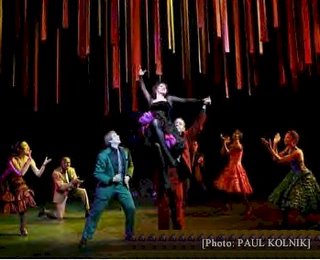
Chita Rivera and The Dancer's Life company in a recreation of the gym sequence from West Side Story. The Jerome Robbins choreography is reproduced by Alan Johnson.
Those piercing eyes! That radiant smile! The fiery way she flips her dress and tosses her hair. And, oh, yeah, those legs!!! Could that describe anyone other than the one, the only, the seemingly indestructible Chita Rivera?

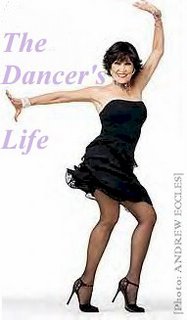 Have you met any theaterlover in the last two weeks who hasn't seen Broadway's legendary gypsy in her autobiographical musical revue Chita Rivera: The Dancer's Life at least twice - and who's not planning to go back a third and forth time?
Have you met any theaterlover in the last two weeks who hasn't seen Broadway's legendary gypsy in her autobiographical musical revue Chita Rivera: The Dancer's Life at least twice - and who's not planning to go back a third and forth time?
If not, you're not getting around much anymore. [One reason they keep going back is that they think CR might reveal more juicy gossip about her youthful, passionate flings!]
CR:TDL is a "living memoir" told by the survivor herself. There's plenty to celebrate with the seemingly unstoppable - amazing considering those pins and the fact that next month she turns 73 - Dolores Conchita Figueroa del Rivero.
Directed and choreographed by multiple Tony and Drama Desk winner Graciela Daniele, the show has a book by Tony, Drama Desk and Pulitzer Prize-winning Terrence McNally, with songs from a long list of musicals Rivera was featured or starred in. There are also two new songs by Tony and Drama Desk-winning composers Lynn Ahrens and Stephen Flaherty, including the poignant "A Woman the World Has Never Seen." Music direction and the superb orchestra arrangements are by Mark Hummel.
In addition to Daniele's staging, two respected choreographers in their own right, Tony Stevens, a veteran CR dancer who's choreographed for her, and Alan Johnson recreate, respectively, the Jerome Robbins/Peter Gennaro and Bob Fosse choreography.
In CR:TDL, it's not just La Conchita onstage alone. She benefits greatly from a superb lineup of nine seasoned dancers, several veteran CR dancers: Richard Amaro [Jerome Robbins' Broadway], Lloyd Culbreath, Edgar Gallardo, Deidre Goodwin [a Chicago Velma], Malinda Farrington, Richard Montoya, Lainie Sakakura, Alex Sanchez and Allison Tucker. Some of the backstory is responsible for the two-hour revue starting out the gate a bit slow, but the show ignites with the recreation of Gennaro's choreography of WSS's Jets/Sharks' gym dance [which Rivera reports he was never given credit for], and really fires up with Daniele's Act Two tango sequence, which Rivera uses to salute the choreographers who've influenced her.
Rivera's reminences of her long-time idol, mentor and eventual co-star Gwen Verdon are particularly poignant - and quite funny. CR's 11:00 "duet" with the ghost of Verdon is the stuff of theater business magic.
Needless to say, Rivera and Daniele's recreations of numbers from many of her shows, not to mention a song from 1955's Shoestring Revue, "Garbage" by Sheldon Harnick, which Bea Arthur did as a torch singer and in which Rivera danced, are showstoppers.
The audiences for CR:TDL provide a virtual lovefest for the Broadway legend and eight-time Tony-nominee [winner of two] and Rivera radiates the love right back.

Like that TV battery bunny, Rivera's going, going, going - and has no plans to do anything but keep going. Rivera's been entertaining with pizzazz and panache for five decades, a milestone she officially celebrated in May. That's an amazing track record in fickle show business.
If you think she's going to retire and rest those gorgeous gams when the run of TDL ends, think ago. Martin Richards, one of the show's lead producers, and Rivera have something up their sleeve that, says Richards, "will rock the socks off everyone!" - a musical with a distinctive Latin beat.
It's hard to find anyone onstage in musical theater who's not been influenced by her or who doesn't love her for her heart, which is as big, if not bigger than her talent.
Rivera's career trajectory "has been a journey from a dream to dancing for those out there somewhere in the dark." It's been, as she sings in the show, "a lovely ride," a wonderful, rewarding adventure.
"With each job," she explains, "I feel as if I'm being pushed into a new area with these great playwrights and creative teams who trust me and want to direct me and take me further and further down this path of the theatrical unknown."
Rivera did it the old-fashioned way; paying her dues, winning her stripes and Tonys and Drama Desks the hard way. She's also a pioneer, one of the very first Hispanic women to break into theater stardom.
 Conchita was born, not in Puerto Rico, but on Flagler Place in N.W. Washington, D.C., the daughter of Pedro Julio Figueroa, who played saxophone and clarinet in the U.S. Navy Band, and Katherine Anderson. Her dad died when CR was seven and her mom was forced to go to work [as a secretary at the Pentagon] to support the family.
Conchita was born, not in Puerto Rico, but on Flagler Place in N.W. Washington, D.C., the daughter of Pedro Julio Figueroa, who played saxophone and clarinet in the U.S. Navy Band, and Katherine Anderson. Her dad died when CR was seven and her mom was forced to go to work [as a secretary at the Pentagon] to support the family.
"We were a large family [two brothers and her two sisters]," says Rivera, "with never a dull moment, especially at meal times. I was a rambunctious tomboy, but I loved to dance. Once I was actually dancing on our kitchen table and the table broke In an attempt to tone me down, Mom enrolled me in ballet school. I was eleven. It worked. I had the most dedicated, most strict teacher, Miss Jones, who rid me of all my attitude and really drove me to correct posture at the bar."
When an instructor from New York's American School of Ballet - run by the esteemed George Ballachine - visited, Rivera and another student were chosen to audition for a scholarship.
"I was scared out of my wits," she remembers. "Miss Jones calmed me down. She told me, ëConchita, don't worry about the long bodies and blond ponytails lined up next to you, just be who you are!'"
She was and won a scholarship. At ABT, her teachers included Maria Tallchief and Edward Villella.
It was the dance world's loss and show biz's gain when the 17-year-old Rivera accompanied a friend to the auditions for the tour of Call Me Madam and she ended up landing the part. Elaine Stritch was the star, and teen chorus member del Rivero was quite scared of her. "She's a bit scary, don't you think?" Rivera asks in the show and gets a huge laugh.
In Rivera's eyes, she was a ballerina, and becoming a gypsy was a step down. As a ballerina, she danced to be seen. She quickly found out that as an ensemble dancer she was mainly there to do crossovers as they changed the scenery.
As intimidated as she was of Stritch, she admired her onstage style - greatly impressed that she was "all legs." Rivera recalls, "I stood stary-eyed in the wings, watching every move Elaine made and I learned from her."
In the mid-50s, it was suggested her name was too long to fit into "lights" on a theatre marquee, and Chita Rivera was born. She made her Broadway debut in Cole Porter's Can-Can, [a show she later did internationally with the Radio City Rockettes], followed quickly by the Victor Young/Stella Unger musical adaptation of Seventh Heaven.
OPENING NIGHT:
Chita Rivera on the red carpet [daughter Lisa is in foreground];
with Bebe Neuwirth and Ben Vereen; Barbara Cook dueting with
Harvey Evans; ageless Liliane Montevecchi and Tommy Tune.
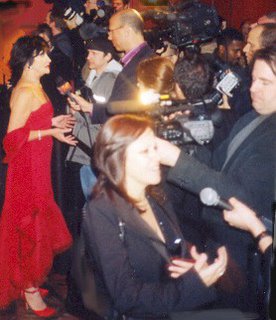
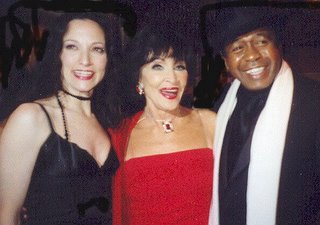
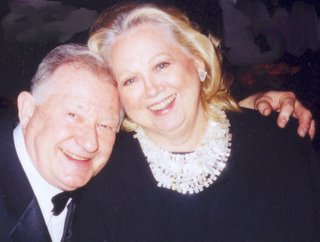
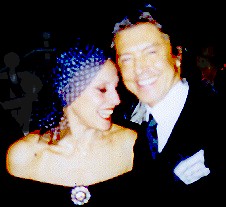
She began her rise out of the chorus in 1957 with Mr. Wonderful, [music and lyrics by Jerry Bock/Larry Holofcener/George Weiss and a book co-authored by Joseph Stein] headling Sammy Davis Jr., "who," says Rivera, "was the most talented performer I'd ever seen. I fell in love with him."
Literally. In CR:TDL, she makes it clear that though they had an affair, the love was very one-sided. After all, as she puts it quite succinctly, "I was a gyspy. He was a star."
After six terrible auditions for Hal Prince's production of Bernstein/Sondheim/Laurents' 1957 West Side Story, Bernstein, recognizing something in her that she didn't know she had, came to the rescue. After correcting her on the pronunciation of his name, he sat at the piano cajoling and pushing until she got what the character Anita was experiencing. "I finally got it, and the job," she says joyously.
She talks about the creative process and how the gypsies bonded as a family [one of the things she loves so much about theater]. Her electric performance started her on the road to stardom. Amazingly, she was not recognized by the Tony nominating committee, an egregious oversight if ever there was one.
WSS led to a serious romance with 5'6" dynamo and dancer extraordinaire Tony Mordente, who played Jet gang member A-Rab. They were married in December 1957, about two months into the run.
Rivera's critical acclaim equaled that of stars Larry Kert and Carol Lawrence, so much so that Prince delayed the WSS West End opening until Rivera gave birth to her daughter, Lisa, and was back in shape.
Mordente, who went on to assist Gower Champion on Birdie, choreograph and direct, was Italian. Though madly in love - "madly" being the optimum word, two combustible temperaments led to a rocky, tempestuous union, especially, says Rivera, because of his insane jealously.
"If I said ëHello' to a cab driver," laughs Rivera, "he wanted to know how I knew him. I would say, ëI just said Hello!' He'd reply, ëAnd as we were getting out, he said Goodbye.' And that's the way it was." The couple divorced in 1965, with Rivera citing that "as one of the saddest events in my life."
But, explains CR, like the late Fred Ebb wrote [in a lyric], "the world goes 'round and 'round. We moved on. Life went on. People change and now we are extraordinarly close friends. Tony is responsible for the very best production of my life, our daughter Lisa.
[Mordente, who's evidently cultivated a different persona, was not only a beaming-with-pride special opening night guest of Rivera, but was also Lisa's date. And he and CR engaged in some oh-the-times-we've had laughs.]
Birdie, was the first time she received billing above the title, starring as Rosie opposite Dick Van Dyke, whom she says was a joy to work with. Three years later, Rivera was hand-picked by Gennaro to appear opposite Herschel Bernardi and Nancy Dussault in Bajour, where as Anyanka she was featured doing some spectacular dancing alongside "this brilliant kid Michael Bennett," who was just beginning to branch out into choreography.
Most know about her theater credits, but - "and for good reason," laughs Rivera - not about her 1973 season with Van Dyke and Hope Lange on The New Dick Van Dyke Show. "I was Dick's neighbor," recollects Rivera. "It was a great opportunity, but I didn't have a lot to do. On one show I was to come in loaded with groceries and find Dick all doped up after being at the dentist. I was to try to rouse him. My lines were, 'Dick. Dick? Dick!' I knew I had to make the most of it, so I really rehearsed ways to have the most impact. 'Dick!! Dick?? DICK!' We did it and I immediately felt it was time to throw in the towel. Done in by three Dicks, I headed back to New York."
In 1975, as jealous jail-house rival Velma Kelly, Rivera and Verdon, as the infamous Roxie Hart, created the razzle-dazzle for Fosse and Kander & Ebb's Chicago. [She has a cameo in the Oscar-winning film adaptation, produced by the original Chicago's capitalizer [a casting director then, he raised all the production money; but because Verdon didn't like seeing more than two producer's names above the title - oh, those where the days! - he was denied credit], Martin Richards, a lead producer of CR:TDL.]

She stumbled through a very short-lived 1981 Birdie sequel. "Donald O'Connor and I tried valiantly to bring him back," she sighs, "but hard as we tried, we couldn't do it!".
She was back on Broadway as the Queen in Elmer Bernstein/Don Black's 1983 Merlin, which co-starred Nathan Lane and, lackluster though it was, managed a six-month run mainly due to Doug Henning's magic.
Among many career highlights, in 1984, she received acclaim and a Tony playing Liza Minelli's free-spirited mom, Anna, in Kander and Ebb's The Rink, which through its trials and tribulations managed six months on Broadway. A year and a half later, she was co-headling with Dorothy Loudon and Leslie Uggams in Herman's Jerry's Girls.
Chita Rivera has had star billing on Broadway, London, Toronto, Tokyo and Vegas. She's taken home awards by the dozens, but she's considered more than a theatrical icon.
In addition to her many awards and honors, she became a "national treasure" as a recipient of a 2002 Kennedy Center Honor. More recently, she's been featured in a Smithsonian Institution traveling exhibition, Our Journey/Our Stories: Portraits of Latino Achievement, showcasing the historical and cultural achievements of Hispanics in America.
When many stars her age are sitting home collecting their hard-earned pensions or doing those musical theater cruises to Alaska or Antarctica, Rivera, in more than top form, is wowing them on Broadway, dancing up a storm with an ensemble of the best dancers to be found anywhere.
"I've been so fortunate throughout," she says, "to have great leading men - Van Dyke, O'Connor, Brent Carver and Anthony Crivello, John McMartin [Kander and Ebb's The Visit, Chicago's Goodman], Antonio Banderas and to have worked with such giants as Sondheim, Bernstein, Prince, Laurents, Frank Galati [The Visit] and now Graciela."
She cannot overlook the actors: Kert, Verdon and Jerry Orbach [Chicago], Bennett; or the composers: Charles Strouse and Lee Adams, Herman and Kander and Ebb, with whom she became intimate friends. Nor the choreographers: Robbins, Gennaro [later a brilliant choreographer in his own right, and Robbins' WSS assistant], Jack Cole, Fosse, Ann Reinking [The Visit] and Rob Marshall [co-choreographer, Spider Woman].
Rivera says her style, "is a little bit of Jerry [Robbins]'s athletic grace, Peter [Gennaro]'s Latin fire and Bob [Fosse]'s minimalism and erotic movements." She credits her incredible footwork to Gennaro, who she claims had the fastest feet in the business.
"I'm a little of each of those people," Rivera adds. "I'm still learning! I'm, first and foremost, a dancer. I've grown into many other things with the help of these geniuses. God truly blessed me! He said, ëOkay, I'll let you go there.' And everyday, I'm still learning."
In CR:TDL, the star pays a special tribute to Cole, who started as a modern dancer with Ruth St. Denis and who's considered the father of jazz dance technique. "Jack had a background in East Indian dancing and even the Lindy hop," notes Rivera. "He blended these elements to create a distinctive style that brought him great acclaim not only onstage but also in big screen musicals."
DOWN MEMORY LANE WITH CHITA RIVERA


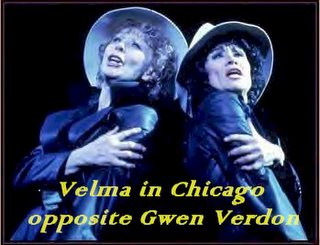

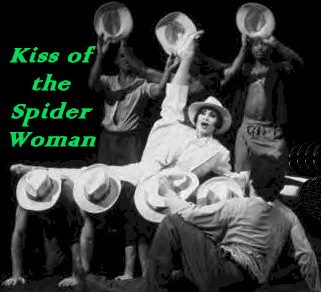


Rivera is one of the few artists who worked for Robbins who doesn't remember him as an arrogant, mean taskmaster. "He was very handsome," she recalls, "I idolized him. He was my ëBig Daddy' and I would do anything for him."
Of Fosse, she says, "He had an incredible sense of humor, but there was this other side: very dark and on the edge."
Her 50-year career in theater, Rivera says, "has been a wonderful and rewarding adventure. With each job, I feel as if I'm being pushed into a new area with these great composers, choreographers, directors and playwrights who trust me and want to direct me and take me further and further down this path of theatrical adventure."
She is quick to point out that's she's always been realistic about her career, "I was never a dreamer. There's nothing easy about show business. It's so seldom that the good guy wins." She, of course, is one of the exceptions.
For Martin Richards and Marty Bell, among the lead producers, of the show, getting this show up and to Broadway has been a labor of love. Both have, for many years, been dazzled by La Conchita's talent.
Impressed with her talent during early rehearsals, when Fosse got sick and the production was delayed, he helped finance Rivera's upper East Side nightclub act [her Feinstein's engagement was evidently not her first nitery appearance]. She opened and you couldn't get in. There were lines around the block." He recalls that she introduced a new song that Kander and Ebb wrote for her, "How Lucky Can You Get?"; and sang some of the songs from the forthcoming Chicago.
"For so many years," he explains, stressing "years," "I talked with Chita about doing the story of her life, so it's no surprise I'm one of the producers. It's been exciting observing her as the show has taken form. I'm thrilled it's finally happening!"
Book writer McNally, who wrote the Spider Woman book, admits he didn't have a lot of research to do: "We'd talk, and I'd go write." He says that the one thing that came as a surprise was Rivera's affair with Davis.
Daniele says she was always "dumbstruck" when she saw Rivera dance. "My eyes are akways glued to Chita. Long ago, I fell in love instantly with that power ó that energy. She's a force of nature!"
Is there anything the sensational Rivera hasn't done? Nope. Rivera claims her longevity is all due to "certainly good genes, but most of all to the discipline instilled in me as a dancer. Dancers are obedient," she laughs. "We do what we're told -- generally without opening our mouths. But, working with every choreographer, I've always been able, been encouraged, to say what I feel. That's the kind of professionals they are."
One attribute Rivera leaves out is her absolute refusal to think negatively in the face of crisis. That got her through her worst crisis.In many ways, the fact that Rivera is working and dancing after the horrendous injuries in a 1986 automobile accident, is a miracle. Her left leg was crushed. The prognosis was totally negative, but not to Rivera. She was determined she'd dance again.
"When I saw the x-rays," she says, "I realized I had work to do; but dancers don't know anything else. Thank God for the discipline. Pity wasn't a word in my vocabulary. I've never been one who does anything half-way."
Incredibly, she was released three weeks later, albeit with 16 screws in her leg. "From day one," Rivera notes, "I obeyed, did exactly what I was told. It was fascinating because I could feel my leg mending." Eleven months later, she had the type of mobility which made her realize she would still have a career. "I wasn't happy with my dancing, but I was on my feet!"
Rivera says she is happy the accident didn't happen when she was younger, as she may not have been as strong.
She did a couple of "shakedown" engagements before signing on for the 1988 Can Can tour. "How crazy is that?" she screams. "Of all the shows! But I didn't miss a kick!"
When Rivera took the stage in Spider Woman, it was mindboggling that she was able to do what she did.
Rivera wears the badge of gypsy with pride. Regarding dance, she maintains that "there is a dance in every movement we make. When you walk onstage, when you move about the scenery - you can make it all appear as dancing. It can all flow. And, when it's not so obvious, that's when you have the real magic."
She says it's hard work maintaining a career, "but I don't understand it if it isn't hard work. Every once in a while, I think, 'You could be doing something much easier!' But would I be happy? No! This is the path that's been chosen for me, and I'm going to stay on it as long as I can, as long I should.
"My philosophy," continues Rivera, "is: If it works, let's do it. People say, 'Aren't you sorry you didn't do the movie of this, or the movie of that?' No!" There are a couple of beats of silence, then she adds, "Well, there was Rita Moreno playing Anita in the film of West Side Story. And her winning an Oscar!"
But, all in all, says Chita Rivera, "Not a day goes by that I don't pinch myself and say thanks for my blessings. I'm the luckiest woman in the world!"
Monday, December 12, 2005 at 10:30 PM | Item Link

Ellis Nassour is an international media journalist, and author of Honky Tonk Angel: The Intimate Story of Patsy Cline, which he has adapted into a musical for the stage. Visit www.patsyclinehta.com.
He can be reached at [email protected]
The last five columns written by Ellis Nassour:
07/02/2010: Summer in the City: Fireworks on the Hudson Launch a Season with Plenty to Do and See
06/13/2010: The 64th Annual Tony Awards Celebrating Broadway Achievement
06/10/2010: Tony Honoree Marian Seldes: Grand Duse of the American Theater
For a listing of all features written by Ellis, click here.
[Advertisement]
[Advertisement]

If you would like to contact us, you can email us at feedback@
broadwaystars.com
[Advertisement]
[Advertisement]

- July 15: Harry Connick, Jr. in Concert on Broadway - Neil Simon
- Sept. 28: Brief Encounter - Studio 54
- Sept. 30: The Pitmen Painters - Samuel J. Friedman Theatre
- Oct. 3: Mrs. Warren's Profession - American Airlines Theatre
- Oct. 7: Time Stands Still - Cort Theatre
- Oct. 12: A Life In The Theatre - Schoenfeld Theatre
- Oct. 13: Bloody Bloody Andrew Jackson - Bernard Jacobs Theatre
- Oct. 14: La Bete - The Music Box Theatre
- Oct. 21: Lombardi - Circle In The Square
- Oct. 25: Driving Miss Daisy - John Golden Theatre
- Oct. 26: Rain - A Tribute To The Beatles On Broadway - Neil Simon Theatre
- Oct. 31: The Scottsboro Boys - Lyceum Theatre
- Nov. 4: Women On The Verge Of A Nervous Breakdown - Belasco Theatre
- Nov. 9: Colin Quinn Long Story Short - Helen Hayes Theatre
- Nov. 11: The Pee-Wee Herman Show - Stephen Sondheim Theatre
- Nov. 13: The Merchant of Venice - The Broadhurst Theatre
- Nov. 14: Elf - Al Hirschfeld Theatre
- Nov. 18: A Free Man Of Color - Vivian Beaumont Theater
- Nov. 21: Elling - Ethel Barrymore Theatre
- Dec. 9: Donny & Marie: A Broadway Christmas - Marquis Theater
- Jan. 13: The Importance of Being Earnest - American Airlines Theatre
- Mar. 3: Good People - Samuel J. Friedman Theatre
- Mar. 6: That Championship Season - Bernard B. Jacobs Theatre
- Mar. 11: Kathy Griffin Wants a Tony - Belasco
- Mar. 17: Arcadia - Barrymore Theatre
- Mar. 20: Priscilla Queen Of The Desert The Musical - The Palace Theatre
- Mar. 22: Ghetto Klown - Lyceum Theatre
- Mar. 24: The Book Of Mormon - Eugene O'Neill Theatre
- Mar. 27: How To Succeed In Business Without Really Trying - Al Hirschfeld Theatre
- Mar. 31: Bengal Tiger at the Baghdad Zoo - Richard Rodgers Theatre
- Apr. 7: Anything Goes - Stephen Sondheim Theatre
- Apr. 10: Catch Me If You Can - The Neil Simon Theatre
- Apr. 11: The Motherf**ker with the Hat - Gerald Schoenfeld Theatre
- Apr. 14: War Horse - Vivian Beaumont Theater
- Apr. 17: Wonderland: A New Alice. A New Musical Adventure. - Marquis Theatre
- Apr. 19: High - Booth Theatre
- Apr. 20: Sister Act - The Broadway Theatre
- Apr. 21: Jerusalem - Music Box
- Apr. 24: Born Yesterday - Cort Theatre
- Apr. 25: The House of Blue Leaves - Walter Kerr Theatre
- Apr. 26: Fat Pig - Belasco Theatre
- Apr. 27: Baby It's You! - Broadhurst Theatre
- Apr. 27: The Normal Heart - Golden Theater
- Apr. 28: The People in the Picture - Studio 54
- Apr. 28: The End of The Season
- Jun. 12: The 65th Annual Tony Awards - Beacon Theatre
- June 14: Spider-Man, Turn Off The Dark - Foxwoods Theater
- June 21: Master Class - Samuel J. Friedman